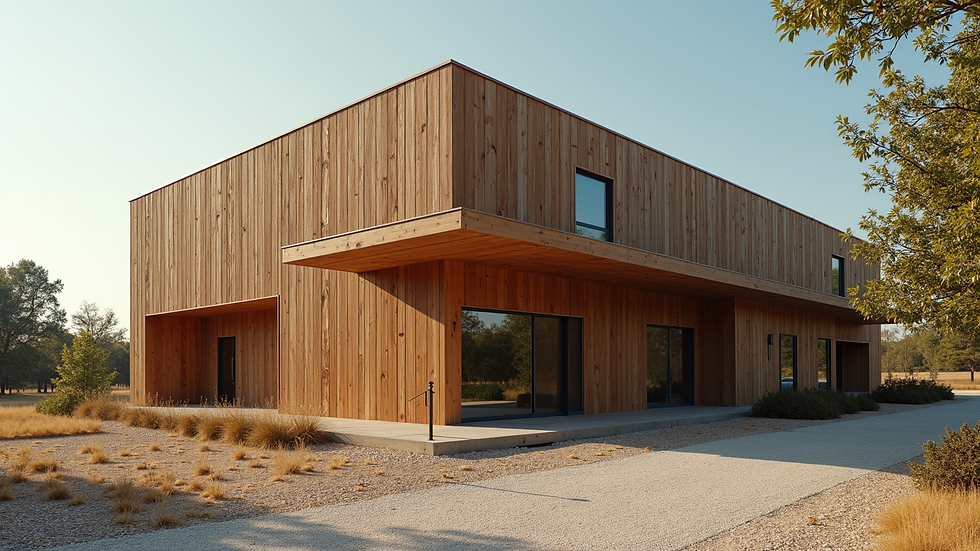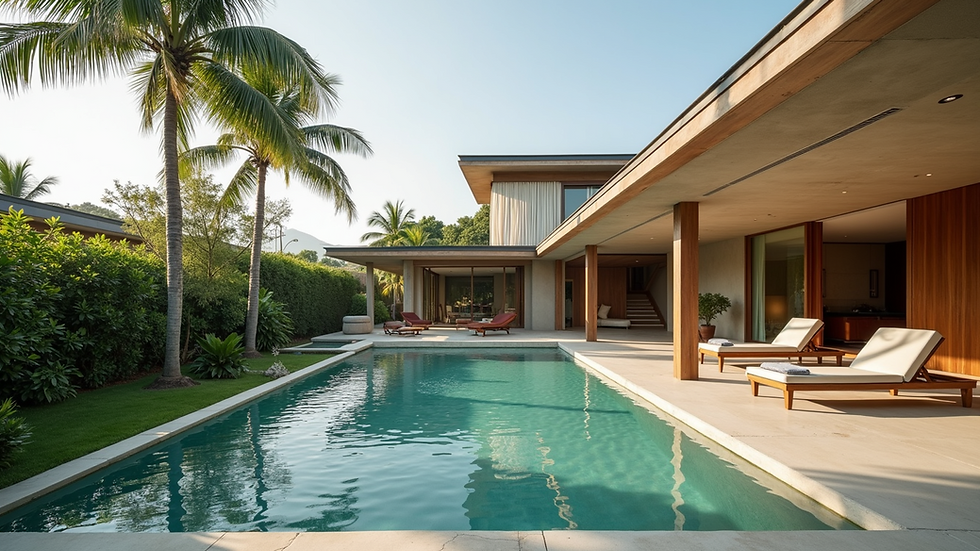How Designs Can Lead to a Sustainable Tomorrow
- Sethukrishnan T S
- Jul 17
- 4 min read
The world is facing significant environmental challenges. Climate change, resource depletion, and urban sprawl are pressing issues that call for immediate solutions. One powerful way we can address these challenges is through design. By prioritizing sustainability in design practices, we can create a future that not only meets our needs but also protects the planet for future generations.
What is Sustainable Design?
Sustainable design is an approach that seeks to minimize negative environmental impacts through thoughtful planning and responsible resource management. It can be applied in various fields including architecture, product design, and urban development. Sustainable design considers the entire lifecycle of products and structures, aiming to reduce waste, conserve energy, and utilize renewable materials.
The statistics speak for themselves. According to the World Green Building Council, building and construction activities account for 39% of global carbon emissions. By adopting sustainable design principles, developers can significantly reduce this figure, benefiting both the environment and society.
Examples of Sustainable Design Practices
Sustainable design practices span a wide range of applications. Here are a few remarkable examples to illustrate how design can lead to a sustainable future:
Renewable Energy in Building
More and more buildings now incorporate renewable energy technologies such as solar panels and wind turbines. For instance, the Bosco Verticale in Milan, Italy, is a striking example of vertical forests that provide both aesthetics and ecological benefits. These buildings feature over 9,000 trees and 20,000 plants, which improve air quality, provide insulation, and even reduce energy consumption.

Efficient Resource Management
Another strong practice is the use of rainwater harvesting and greywater recycling in residential design. Homes equipped with these systems can significantly reduce water consumption. For example, the Rain Vortex in Singapore collects rainwater for irrigation and other non-potable uses—showing how integrating systems can enhance sustainability.

Sustainable Materials
Using sustainable materials is crucial in the design process. Recycled materials, bamboo, and reclaimed wood are becoming common in residential and commercial projects alike. One standout is the Bullitt Center in Seattle, known as the greenest commercial building in the world. It features FSC-certified wood, recycled materials, and an innovative composting system. These choices maximize resource efficiency while promoting long-term sustainability.

What is Sustainable Architecture Design?
Sustainable architecture design refers to creating buildings that are environmentally responsible and resource-efficient throughout their life-cycle. This includes everything from planning and design to construction, operation, and ultimately deconstruction or repurposing. Sustainable architecture design incorporates passive solar energy, green roofs, and natural ventilation—a combination that aims to lower energy costs while reducing environmental damage.
Moreover, it often emphasizes the local context of the construction site. By taking local climates and ecosystems into account, architects can design buildings that are not only energy-efficient but also harmoniously integrated into their surroundings.
The Role of Legislation and Policy
Government policies have a significant impact on sustainable design practices. Policies that incentivize green building initiatives can accelerate the widespread adoption of sustainable design. For example, many cities offer tax rebates for buildings that meet Energy Star or LEED certification standards. These policies encourage developers to invest in eco-friendly materials, efficient energy systems, and designs that consider environmental impact.
According to the International Energy Agency, with the right policies, we can achieve a 50% reduction in building emissions by 2030. This highlights the necessity of collaboration between architects, policymakers, and the community in order to foster an environment conducive to sustainable design.
Community and Education
The success of sustainable design is also rooted in community engagement and education. Public awareness campaigns that educate communities about the benefits of sustainable living can lead to stronger support for eco-friendly initiatives. Workshops and programs that focus on sustainable practices encourage self-sufficiency and inspire individuals to adopt sustainable designs in their own homes.
Education also plays a crucial role in training the next generation of architects, designers, and builders. Institutions like the University of California, Berkeley, offer specialized programs in sustainable design, ensuring that future professionals are equipped with the tools and knowledge to create a sustainable future.
Practical Recommendations
As individuals looking to contribute to a sustainable tomorrow, here are some actionable recommendations:
Incorporate Nature: Bring plant life into your living or working space to improve air quality and aesthetics. Even small changes can have a big impact.
Educate Yourself: Keep updated with the latest sustainable design innovations and trends. Platforms like TED Talks and online courses can provide valuable insights.
Support Local: When possible, choose materials and products from local sources. This reduces transportation emissions and supports the local economy.
Invest in Energy Efficiency: When renovating your home, consider energy-efficient appliances and systems. Even simple changes like LED lights can lead to significant savings long-term.
Advocate for Policy Change: Get involved in local government to advocate for sustainable building codes and practices. Your voice can lead to meaningful change.
A Vision for the Future
In conclusion, sustainable design is crucial for steering the planet towards a healthier future. It is vital for architects, designers, and communities to come together in the shared goal of creating a sustainable tomorrow. As we innovate and adopt eco-friendly practices, we can pave the way for cleaner cities, healthier ecosystems, and economies that value sustainability at their core.
By embracing themes of sustainability in design, we set a precedent for future generations, ensuring that they inherit a planet that is not only livable but thriving. As we confront climate challenges head-on, let us remind ourselves that every design decision counts, and every effort contributes to a more sustainable world.




Comentários